Chapter 11: "A Warped Point Of View"
Some details, ideas, and
musings I've had experiencing effective RPGs and RPG Makers
© May 2019 Written by David Wicker
Please do
not reprint without permission
If you're looking for the newest chapter to Future Barrier, I finished writing that 3rd book last week found HERE and am taking a break. So - there won't be a chapter on that this week. I'll start the 4th book next week.
However, if you're here for the latest information on writing your own RPG or RPG Maker, you're at the right place and we can continue now ...
First off, what do you know about warps ?
Well, yes, there is the dance, the Time Warp from Rocky Horror Picture Show, but no, it's not just a pelvic thrusting in and out but a fairly complex data table that keeps track of all the places the player can instantly go to - provided they have been there before.
So what exactly is a warp for RPGs ?
In it, you can touch a part of a map, cast a spell, or use a talisman or machine that will literally teleport the player away from where they are to a new location, much like Star Trek Enterprise's own teleporter.
But instead of disintegrating the original and reintegrating a copy of the matter to a new location, it is simpler in an RPG, where you merely change the map and X and Y location of the player - and nothing further.
But how do you keep track of all of these warp locations, both starting and ending positions ?
The difficult way as most RPGs do determine if and when a player first enters a map and then, according to a preset table, adds a fixed set of coordinates available to the player that they can then WARP to.
This is fine but can be quite tedious for the Worldbuilder or even programmer to manually enter in all the coordinates and code for all the maps and exact location the player must WARP to once they have first entered a new map.
Me ? I've had years to think about and believe I have a better way, and it's done automatically by the computer.
First off, you determine what KIND of map you are entering. If it's the OUTSIDE map, then no warps are checked or added, obviously you came from some OTHER smaller map to enter here.
But if instead you are entering a DUNGEON or some type of structure where there is an entrance and monsters, do the following.
First off in your mapper, ALWAYS record the very last tile position where the player was BEFORE entering a new map.
If it's a dungeon, tower, or what have you which has an entrance, then no warp is added but DO retain this location prior to entry as part of ESCAPE. Escape is a different kind of warp that only works in dungeons and other places that house monsters and treasure.
When the ESCAPE spell or item is invoked, the player then WARPS out of where they are to this exact position - as mentioned the location prior to entering the new map.
So let's say the player is on the MAP of "Continent, Shalimar." They are just now preparing to enter the "Dungeon Of Mist" and are one tile away from touching the actual dungeon tile.
They move one step north and then select a button, like ENTER to enter inside this dungeon. Right then and there the current position of the player is recorded, Map, X, and Y. THEN the player is warped to the dungeon map (which must manually be provided by the programmer or Worldbuilder).
Should the player once deep inside decide not to manually retrace their steps to find the original entrance to this dungeon again, they can cast or use an item to WARP directly to EXIT - by returning the player to the Map, X, and Y coordinates recorded just prior to entering.
So in the game, the player is already deep in the dungeon and catacomb maze of rooms. They cast an EXIT spell. They are then teleported directly back on to the dungeon tile on the outside Shalimar, at the specified X and Y coordinates. Done !
To keep track of warps for cities and castles is a bit more work. What other RPGs do is the tedious way, of determining if it is the first time to enter this map. If so, a specified set of coordinates must be manually coded into the world for this as well as a manual set of coordinates should the player try to WARP to here from a different part of the map.
Using my method similar above is much easier. Once the player enters a MAP that has the CLASS of city, castle, or any other structure where shops and people appear, once again like before, record the very last position the player was at, and the map they were on.
On the destination map, inside the city, place a special tile that is invisible to the player but MARKS directly where the player will go once an attempt to warp to this NAMED map. So the only information you would need to save on the outside map for that warp tile is the NAME of the map you are going to.
Then a search is done of the entire destination map for that invisible MARK and puts the player right there. No need for Map #, or X and Y coordinates.
But if this is the first time for the player to enter this map, then the last coordinates of the player and map are ADDED to an internal roster. That roster includes visibly for the player the name of the map. It invisibly includes the previous map and X/Y coordinates.
Now should the player cast a WARP spell and select this city (based on the name recorded in the roster), then the player will be warped exactly to the map and coordinates that were encoded at the first time of entry to this map by the player.
Done !
Now something else that should be covered is how to handle transportation. That is, a boat, an airship ... how do these follow you ?
To be perfectly fair this can get complex, because if you WARP away from your transports to a different city let's say, then how do you find later where your transports are ?
Now sure, you can use a map that shows the entire continent you are on and use special flashing markers to show where they are, but wouldn't it be convenient if when you WARP your transports follow ?
How can this be done ?
Well, the easiest way I can see would be to make sure that ALL city/castle places you can warp to always have one tile away from WATER and one tile away from a non-obstructing tile like GRASS or FOREST.
Then when you warp to this location, automatically scan the area around and, if the player has a boat and the tile WATER is found, position that boat directly in the water. And you have an AIRSHIP and GRASS or FOREST is found, position that airship directly on that dry land tile.
The oddity with this method while fairly easy to program would mean that each and every city and castle MUST be touching water. You could certainly go about it the difficult way and record a manual location for each and every map for each and every position your transport would appear, but wouldn't it just be easier to let the computer do it for you automatically as listed above ?
. . .
This next section talks about WARP ARROWS. So far to the best of my knowledge, only S2 has done this. In it, you can place an invisible WARP ARROW directly on top of a tile and when the player touches this tile, they will WARP on that same map in that direction invisibly until they touch a WARP CATCH or another WARP arrow.
A check can be made to ensure the player does not get stuck in a loop by counting the number of warp arrows per turn. If it exceeds 100, there's a good chance you're in a loop - stop and return directly back to the location before the warp was attempted - with an error message for the Worldbuilder.
The advantage of warp arrows is that you do not need to record exact new map and X and Y coordinates for every custom warp you want. You need only use WARP ARROWS and WARP CATCH.
It is also possible as S2 does to create a WARP that has a name. For instance, you could have a glowing statue in one room. The player touches it, and they are warped to the same map but a different location, perhaps where treasure chests are stored.
The tedious way is to record the X & Y location of where the warp starts, and the X & Y locations of where the warp ends and THEN add a new warp manually which warps back to where the player came from. Tedious indeed.
An easier way would be just to NAME this warp "Treasure Room" and then WARP to find a WARP CATCH that has this same name. No need for warp arrows as you have the exact location you want to go to - and you have the added option by default of creating a return warp.
If that WARP does in fact find another WARP of the exact same name instead of a CATCH WARP, it will warp there and stop. If the player warps from there again, they go to the next found WARP, cycling by checking the current warp tile, all the way to the right, shifting around to the next lower tile, until the entire map is scanned.
Doing so allows the
player to cycle through a whole series of warps where the programmer or
Worldbuilder need never record any coordinates at all.
A simple method to handle warping a player where the warp NAME or ARROW is on top of a solid object is, move the player down one tile until a non-solid tile is found like FLOOR or GRASS, and have them facing down additionally when they arrive.
. . .
The other two warps I should mention which are also in S2 are called ESCALATOR warps. If your maps are numbered, say "Dungeon 1" and "Dungeon 2," let's say you are on Dungeon 1 and hit an ESCALATOR warp that is facing DOWN. That means when you touch this warp, you will automatically go UP to the next number in maps, in this case, Dungeon 2 - but X and Y will remain unchanged, remember - it's just an escalator.
If you did not include an ESCALATOR warp back on Dungeon 2 going back UP, then the player would not have an easy way to return. In your map editor, you could set it is so when the Worldbuilder creates an escalator warp, it by default creates a return escalator warp, too - at the option of the Worldbuilder.
. . .
Phew ! That's it ! I hope you found this instrumental. I know older RPGs requires you to manually enter in all the coordinates any time you wanted to move the player to a new map and/or X & Y. Instead use the shortcuts I mentioned above and let the computer do all the work for you !
Make use of WARP ARROWS, WARP CATCHES, NAMED WARPS, and ESCALATOR WARPS. They will greatly improve the simplicity of building warps and teleporters without having to fuss with exact map and/or X/Y coordinates.
. . .
Next
week we'll cover the topic of SCRIPTING. That is, what happens when you touch a tile, object, or NPC on a map ? How do they respond ? How do they remember things the player has done since the last time they talked to them ? And how can they instrumentally help the player in their adventure and quest ?
These questions will be answered. Until then, bye for now ...




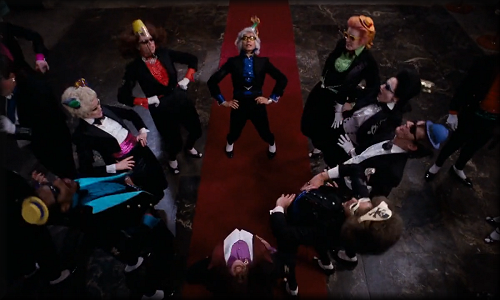
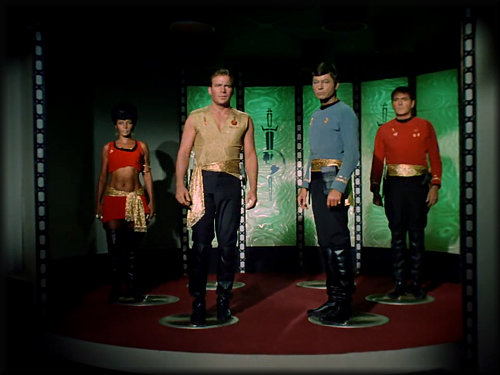
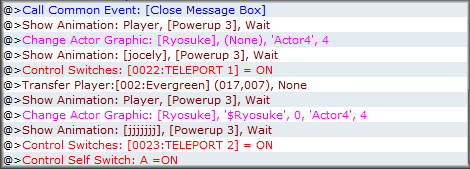
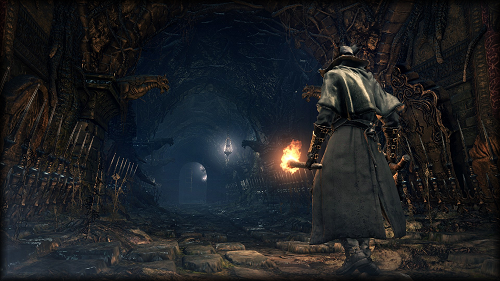
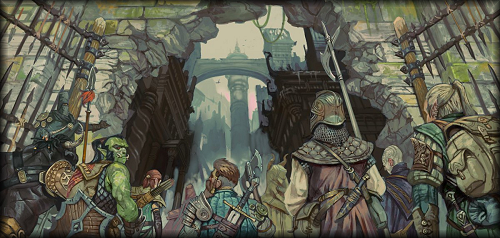
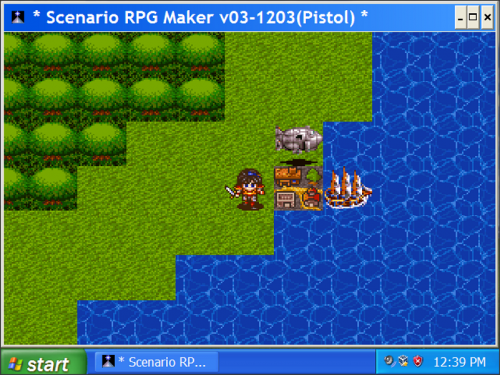
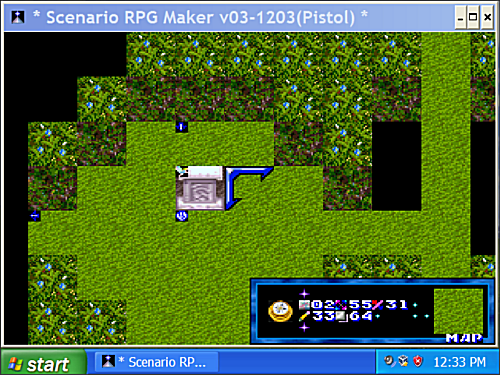
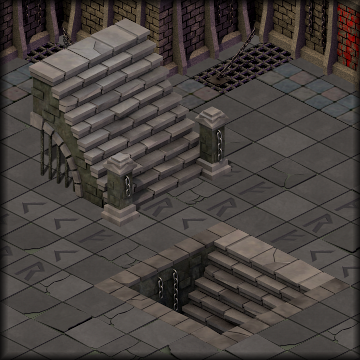



 Flag Writing
Flag Writing